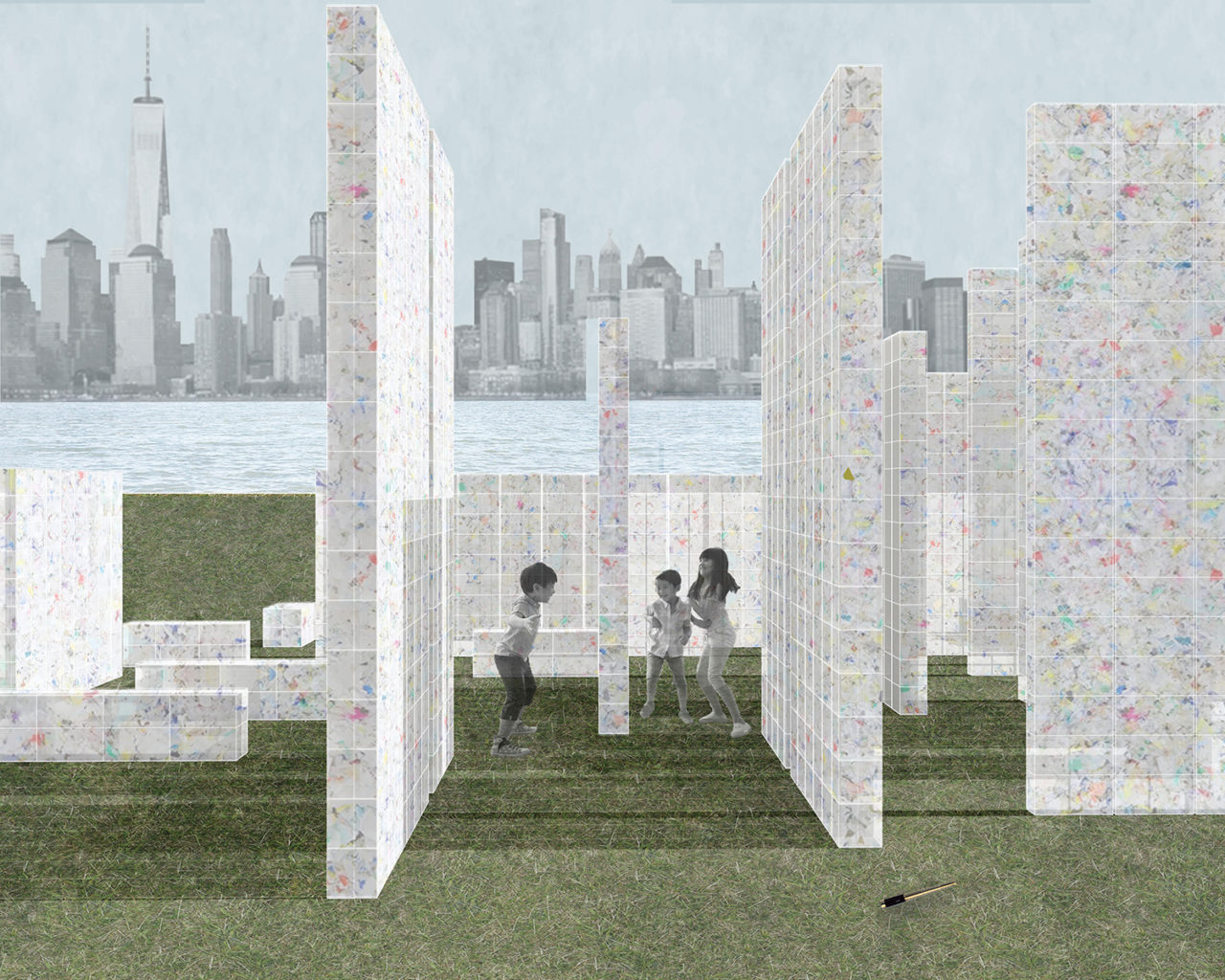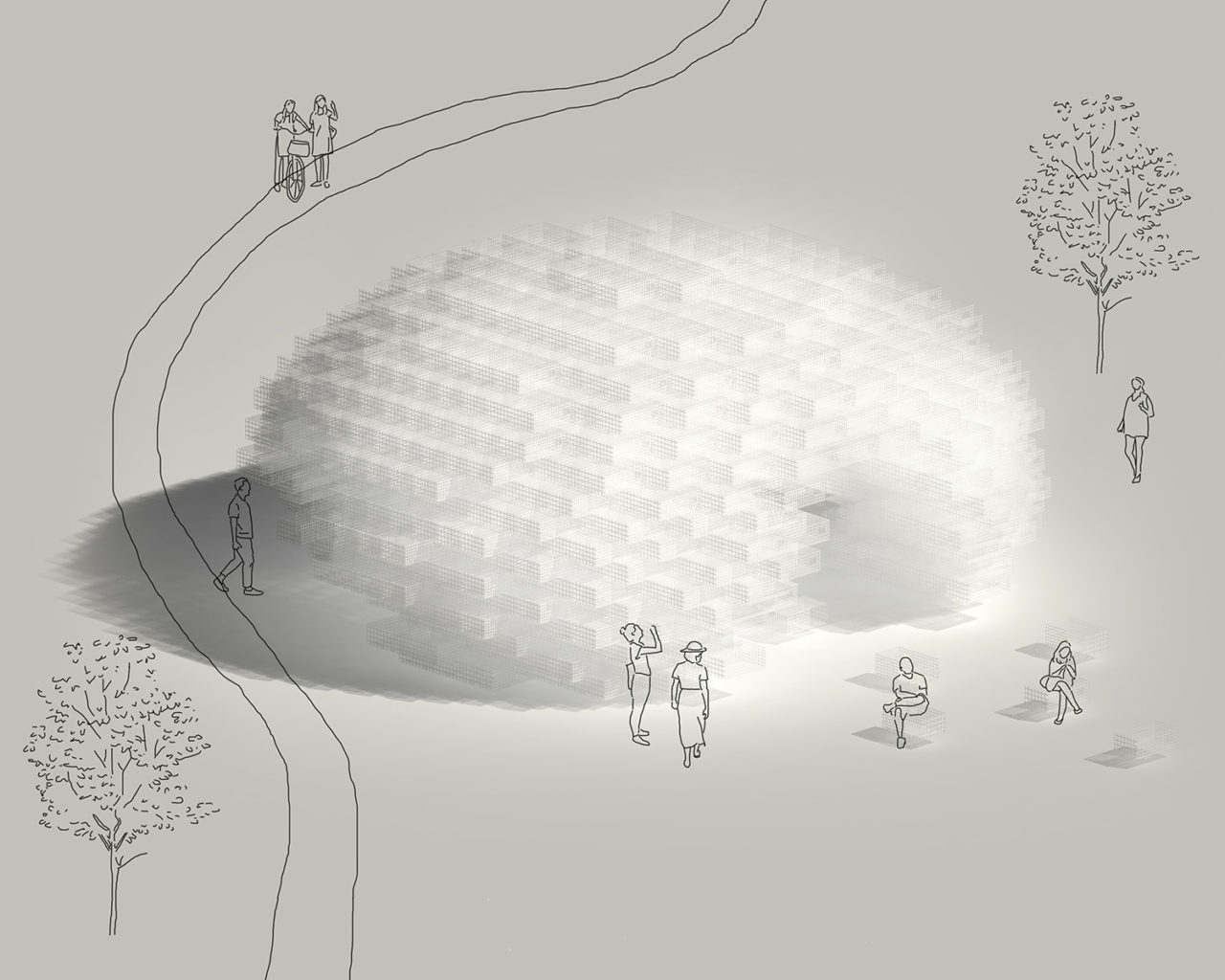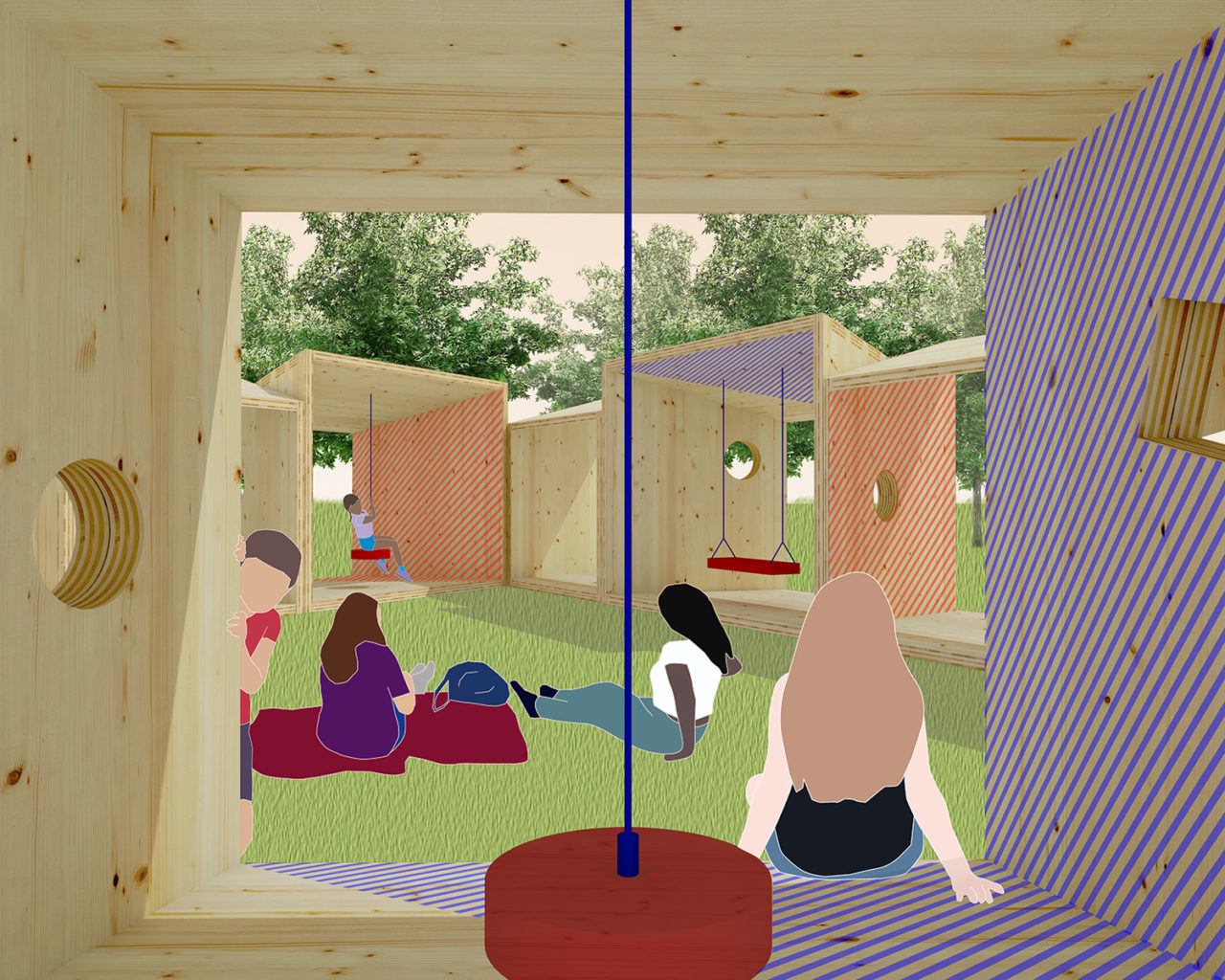by: AIA New York
AIA New York is excited to announce the five finalists for the 2019 City of Dreams Competition, hosted by FIGMENT, the AIANY Emerging New York Architects Committee (ENYA), and the Structural Engineers Association of New York (SEAoNY). The City of Dreams Pavilion, so named for its focus on the future of a world that faces constraints on both economic and natural resources, aims to promote sustainability-oriented thinking within the architecture and design communities, requiring designers to consider the environmental impact of their designs from materials sourcing to disposal (or ideally reuse) of waste at the end of the season. The winning team, to be announced in the end of January, will construct their design on Roosevelt Island for the summer 2019 season.
Brood FM by Hadin Charbel, Patrick Donbeck, and Déborah López
Brood FM attracts and broadcasts the signals of human and non-human actors throughout the city via the creation of contextual micro-environments on Roosevelt Island. Through a combination of standardized construction scaffolding and mesh, modular building logic, native plants and animals, and recording and transmitting devices, these environments will enchant the native species by modulating surfaces and patterns, creating a variety of conditions with inter-species resonance. A brood speaks to an arrival of life, a rhythmic materialization produced by a collective presence. Brood FM anticipates the emergence of the island’s urban ecology, acting as an ambient antenna for the city.
Compo by Daisy Ames and Julie Perrone of Studio Ames, and Heidi Kujawa and Michael Kujawa of ByFusion
Compo is a series of walls of various heights that are arranged and layered to create playful interstitial paths as well as framed views of the city. The walls are constructed of an innovative and sanitary building block called the ByBlock, which is made of recycled plastic. Compo’s design celebrates the material of the blocks, bringing awareness to the plastics that we use and discard on a daily basis. Through this project, Studio Ames hopes to inspire users to think about their material choices and closed loop life cycles.
Ghost Trap by Suemin Jeon
“Ghost fishing” is the phenomenon—one instance happening just a few hours from New York City—where neglected fishing gear indiscriminately traps and kills marine life. Long Island Sound’s once-thriving lobster industry has been facing a rapid decline since the late 1990s due to the area’s shrinking lobster population. The cause of the die-off is unknown, though a few blame climate change. As a result of the industry’s decline, the bottom of the Long Island Sound has accumulated tons of derelict metal lobster traps, polluting and trapping what remains of its lobster population. Unused traps are also headed to landfills. The pavilion, made entirely out of discarded lobster traps, makes the problem of ghost fishing visible to the public, while inviting users to question what has happened to the Long Island Sound’s lobster population. After deinstallation, traps will be repurposed as outdoor furniture.
Pollutes of Dreams by Oscar Ulises Ramirez Hernandez
The large floating prisms of Pollutes of Dreams reference the skyscrapers of New York City, defying gravity by appearing as if suspended in the air. Visitors are encouraged to inhabit the four pyramid structures, each of which offers a completely different spatial experience. Through the interaction of sound, smell, light and shadow, temperature, texture, and material, visitors will perceive each space in a new way, imagining that they are floating in the universe among clouds of galaxies. This pavilion will be used as a community hub, built with materials that look like garbage.
Salvage Swings by Somewhere Studio (Jessica Colangelo and Charles Sharpless)
Salvage Swings utilizes scrap cross-laminated timber panels from an ongoing construction site to create a fun and inviting summer pavilion. The pavilion is constructed of 12 simple modules that frame a swing and the swinger’s view. The modules are organized in a triangular form, allowing for activities beyond swinging. The module frames provide covered seating areas, the space within them becomes a central gathering space for community events, and the entire pavilion can become a playground for hide-and-seek games. Following the summer events, individual modules from the pavilion can be redistributed as individual swings to parks across the city.
See former winners of the City of Dreams Competition here.












